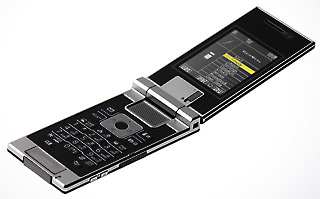 DoCoMo today announced the development of new 3G FOMA handsets – the 703i-series plus the D800iDS and SO903iTV. The 703i-series consists of eight models: N703i, P703i, D703i, F703i, N703iD, P703i, SH703i and SO703i. Most of the models are extra slim, with the N703i (image at right) and P703i being the thinnest 3G clamshell handsets in the world, at 11.4mm each, as of 15 January 2007 (and according to the company).
DoCoMo today announced the development of new 3G FOMA handsets – the 703i-series plus the D800iDS and SO903iTV. The 703i-series consists of eight models: N703i, P703i, D703i, F703i, N703iD, P703i, SH703i and SO703i. Most of the models are extra slim, with the N703i (image at right) and P703i being the thinnest 3G clamshell handsets in the world, at 11.4mm each, as of 15 January 2007 (and according to the company).
Our Wireless Watch Japan Web Video Triple Play article posted 10 November has a quick shot of Natsuno-san with these new extra-slim handsets.
The new 703i-series handsets made by NEC, Panasonic, Mitsubishi, Sharp, Fujitsu and Sony Ericsson have features ranging from full-track music, Mega Appli gaming and DCMX mobile commerce to document viewer and full mobile web browser. A couple of interesting design notes; Fujitsu’s F703i model is water-proof and claims to be completely safe in the shower while Mitsubishi’s D703i is Japan’s thinnest candybar-style cellphone available, at 9.9mm thick.
DoCoMo also unveiled the SO903iTV handset equipped with a high-resolution LCD using BRAVIA technology and high-quality audio for viewing “One-segment” (1 Seg) terrestrial digital TV broadcasts. In addition the company announced the D800iDS [.jpg image], which according to the press materials, is a world-first cellphone with two full screens – a conventional upper screen and a touch-screen instead of the traditional lower keypad. The N703iD will be marketed on 26 January. The other 703i-series models and D800iDS are planned to be sold in February, while the SO903iTV is scheduled to be launched in June.
We have images with full details after the jump.


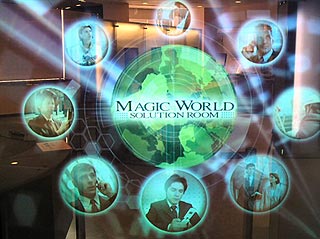
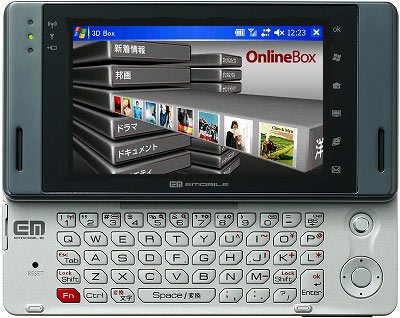 eMobile announced their debut package offering – complete with terminals, data cards and flat-rate HSDPA price plan – today at a Tokyo press conference with company representatives joined by notable industry partners including Paul Jacobs, CEO of Qualcomm, Darren Huston, CEO of Microsoft Japan, and Masafumi Matsumoto, representative director from Sharp. The upstart carrier’s founder, chairman and CEO, Sachio Semmoto (who was co-founder of DDI, which became KDDI), called their newly introduced Sharp EM-One smartphone, “the next-generation mobile broadband device” – which was “designed to deliver always-on broadband at a reasonable monthly flat-rate price.”
eMobile announced their debut package offering – complete with terminals, data cards and flat-rate HSDPA price plan – today at a Tokyo press conference with company representatives joined by notable industry partners including Paul Jacobs, CEO of Qualcomm, Darren Huston, CEO of Microsoft Japan, and Masafumi Matsumoto, representative director from Sharp. The upstart carrier’s founder, chairman and CEO, Sachio Semmoto (who was co-founder of DDI, which became KDDI), called their newly introduced Sharp EM-One smartphone, “the next-generation mobile broadband device” – which was “designed to deliver always-on broadband at a reasonable monthly flat-rate price.”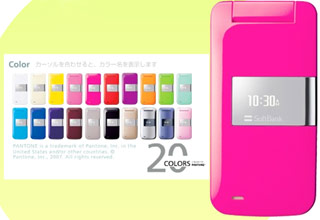 SoftBank Mobile rounded out the Japanese operators spring handset announcement rush this week by announcing a new fleet of models – Flash site
SoftBank Mobile rounded out the Japanese operators spring handset announcement rush this week by announcing a new fleet of models – Flash site  DoCoMo today announced the development of new 3G FOMA handsets – the 703i-series plus the D800iDS and SO903iTV. The 703i-series consists of eight models: N703i, P703i, D703i, F703i, N703iD, P703i, SH703i and SO703i. Most of the models are extra slim, with the N703i (image at right) and P703i being the thinnest 3G clamshell handsets in the world, at 11.4mm each, as of 15 January 2007 (and according to the company).
DoCoMo today announced the development of new 3G FOMA handsets – the 703i-series plus the D800iDS and SO903iTV. The 703i-series consists of eight models: N703i, P703i, D703i, F703i, N703iD, P703i, SH703i and SO703i. Most of the models are extra slim, with the N703i (image at right) and P703i being the thinnest 3G clamshell handsets in the world, at 11.4mm each, as of 15 January 2007 (and according to the company).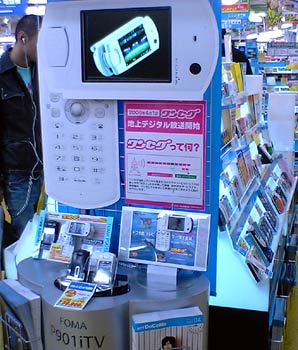 A recent
A recent